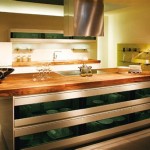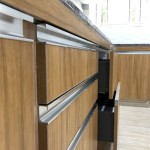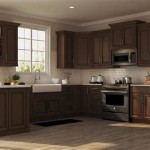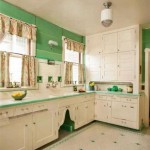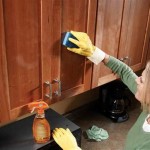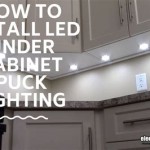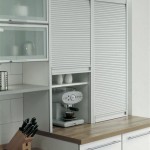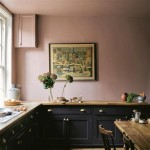Where Do You Put LED Strip Lights Under Cabinets?
LED strip lights have become a popular choice for under-cabinet lighting due to their energy efficiency, ease of installation, and the ambient glow they provide. Properly positioning these lights is critical to achieving the desired aesthetic and functionality. Strategic placement ensures optimal illumination without creating glare or uneven lighting patterns. This article will explore the key considerations and best practices for positioning LED strip lights under cabinets to maximize their benefits.
The primary goal of under-cabinet lighting is to enhance task lighting on countertops, making food preparation, reading recipes, and other kitchen activities easier and safer. Beyond functionality, under-cabinet lights contribute to the overall ambiance of the kitchen, adding warmth and a modern design element. Careful planning during the installation process is essential to ensure both objectives are met.
Before even considering the specific location for the LED strips, assessing the existing lighting in the kitchen and identifying areas that require additional illumination is crucial. Considering the color temperature of the LED strips is also important. Warmer color temperatures (2700K-3000K) create a cozy and inviting atmosphere, while cooler temperatures (4000K-5000K) offer a brighter, more energizing light, suitable for task-oriented spaces. The choice should complement the existing kitchen décor and the desired mood of the space.
Recessed vs. Surface-Mounted Cabinets
The design of the cabinets themselves significantly impacts the optimal placement of the LED strips. Cabinets can be broadly categorized as recessed or surface-mounted. Recessed cabinets have a lip or frame that extends slightly beyond the cabinet's bottom surface. Surface-mounted cabinets, conversely, have a flat bottom surface.
For recessed cabinets, the ideal location is typically within the recess, close to the front edge of the cabinet. This position shields the LED strip from direct view while still casting light effectively onto the countertop. The recess acts as a natural diffuser, minimizing glare and creating a more even distribution of light. The depth of the recess should be considered; a deeper recess might necessitate positioning the LED strip further forward to prevent the light from being completely blocked.
For surface-mounted cabinets, the options are more varied. Placing the LED strip directly on the bottom surface towards the front edge is a common approach. However, this can sometimes result in visible diodes, creating an unwanted dotted effect on reflective countertops. To mitigate this, consider using LED strips with higher LED density (more LEDs per inch) or employing diffusers. Diffusers, typically made of plastic or aluminum channels with a translucent cover, help to scatter the light and create a smoother, more uniform glow.
Another option for surface-mounted cabinets is to install a small lip or trim along the bottom edge of the cabinet to conceal the LED strip. This creates a similar effect to recessed cabinets, hiding the diodes and providing a built-in diffuser. The trim can be made from wood, plastic, or metal, and should be chosen to complement the cabinet's style and finish.
Distance from the Wall and Countertop Edge
The optimal distance of the LED strip from the wall and the countertop edge is another critical factor in achieving effective and aesthetically pleasing under-cabinet lighting. Placing the strip too close to the wall can result in uneven lighting, with a bright spot directly beneath the cabinet and a fading effect further out on the countertop. Conversely, placing it too close to the countertop edge can make the diodes visible and create harsh, direct light.
Generally, positioning the LED strip approximately 1-2 inches from the wall provides a good balance between illuminating the backsplash and ensuring even light distribution across the countertop. This distance allows the light to spread sufficiently to cover the entire work surface without creating a concentrated hotspot near the wall. Experimentation is encouraged to find the optimal distance based on the specific dimensions of the cabinets and the desired lighting effect.
For surface-mounted cabinets, the distance from the countertop edge is equally important. As mentioned earlier, visible diodes can be a problem, particularly with reflective countertops like granite or quartz. Using LED strips with higher LED density or employing diffusers can help mitigate this issue. If neither of these options is chosen, positioning the LED strip further back from the edge, perhaps 2-3 inches, can minimize the visibility of the diodes, though this may somewhat reduce the overall brightness on the countertop. A balance must be struck between concealing the light source and providing adequate illumination.
The height of the cabinets above the countertop also influences the required brightness and positioning of the LED strips. Higher cabinets will necessitate brighter lights to adequately illuminate the workspace below, while lower cabinets may require less intense lighting and careful positioning to avoid glare.
Considerations for Different Countertop Materials
The material of the countertop plays a significant role in how light is reflected and distributed. Understanding these properties is crucial for optimizing the placement and brightness of LED strip lights.
Shiny or reflective countertops like granite or quartz can amplify the visibility of individual LED diodes, creating an undesirable "dotted" effect. This is because the smooth, polished surface reflects the individual points of light directly upward, making them more noticeable. As previously mentioned, using LED strips with higher LED density or diffusers can help to minimize this effect. Another strategy is to choose LED strips with a lower light output or dimming capabilities, allowing users to adjust the brightness to a comfortable level.
Matte countertops, such as laminate or honed stone, tend to absorb more light and reflect less than their glossy counterparts. This means that LED strips may need to be brighter to achieve the same level of illumination. The placement of the LED strips may also need to be adjusted to maximize the light output onto the countertop. Experimenting with different positions and brightness levels is crucial to find the optimal setup for matte countertops.
Dark-colored countertops, regardless of their finish, absorb more light than lighter-colored surfaces. This can make the kitchen appear darker and require brighter under-cabinet lighting to compensate. When using LED strip lights with dark countertops, consider using higher-lumen LED strips and positioning them closer to the front edge of the cabinet to maximize light output.
Conversely, light-colored countertops reflect more light and can make the kitchen appear brighter. This may allow for the use of lower-lumen LED strips or positioning them further back from the edge of the cabinet to reduce glare. The goal is to provide adequate task lighting without creating an overly bright or harsh effect.
In summary, careful consideration of the countertop material is essential for achieving optimal under-cabinet lighting. Shiny countertops require strategies to minimize diode visibility, while matte and dark countertops may necessitate brighter lights and strategic placement to maximize illumination. Adapting the choice of LED strips and their positioning to the specific properties of the countertop will result in a more functional and aesthetically pleasing kitchen space.
Ultimately, the ideal placement of LED strip lights under cabinets depends on a combination of factors, including cabinet design, countertop material, personal preference, and the desired lighting effect. Experimentation is often necessary to find the best solution for a particular kitchen. Before permanently installing the LED strips, it is advisable to temporarily attach them to the cabinets using tape and observe the lighting effect at different times of the day and under various lighting conditions to ensure the chosen placement meets the homeowner’s needs and expectations.

Led Strip Light Installation Tips Armacost Lighting

88light How Do I Install Led Under Cabinet Lights On One Power Source With Gaps Between The Cabinets

How To Create Under Cabinet Lighting That Will Impress Your Guests

How To Install Under Cabinet Lighting In The Kitchen Using Led Light Strips

How To Install Under Cabinet Led Strip Lights

Where To Place Led Strips Best Way Light Inside And Under Cabinets

How To Install Under Cabinet Lighting In The Kitchen Using Led Light Strips
How To Choose And Install Led Under Cabinet Lighting Simple Design Guidelines

How To Choose And Install Led Strip Lights For Kitchen Cabinets

88light How Do I Install Led Under Cabinet Lights On One Power Source With Gaps Between The Cabinets
Related Posts

